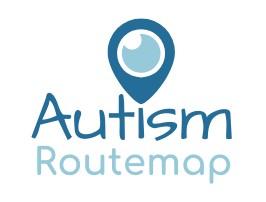How do you explain autism?

Here in the UK, summer is well … sort of happening. It’s 23°C outside so no complaints there but courtesy of high-pressure systems in other parts of the world, we have seen our fair share of unsettled conditions. We’ve had flooding in London earlier this week and some strong winds recently which were very reminiscent of my Cape Town years where the howling southeaster regularly showed us who was boss.
When describing wind, weather forecasters tell us about the direction and speed but there aren’t, for obvious reasons, any words to describe what it looks like. Though we can’t see it, we can certainly see the effects. In extreme conditions, wind can decimate large areas leaving piles of rubble where houses once stood.
Like wind, autism is something that can’t be seen but nevertheless has a huge impact. An issue that regularly comes up in conversation with clients is, “How do I explain this to my friends and family?”
A common explanation for autism is that it is a spectrum condition. This is an attempt to demonstrate that autistic traits can range from mild to severe. Spoken communication, for example, can be extremely limited in one person whilst another may be incredibly articulate.
The problem with the linear spectrum perspective is that it describes autism from the neurotypical viewpoint and can also be wildly inaccurate. A person with so-called mild autistic traits may, for example, experience extreme discomfort in social situations even to the point of panic. Repeated over and over the impact can feel like a catastrophic hurricane.
The linear spectrum perspective easily leads to comments like “you’re only a little bit autistic” or “we’re all a bit autistic” which doesn’t come near to capturing the autistic person’s reality.
What follows is sometimes referred to as the “double empathy problem” as described by Damian Milton1. In a nutshell, this is where neither the neurotypical person nor the neurodivergent person fully grasps what the other is experiencing. As a result, we make judgements about people using the lens of our own perspective.
A far more useful and accurate description of autism is the circular spectrum, beautifully illustrated below by Rebecca Burgess2.

The circular spectrum looks at individual skill sets and shows just how tremendously we can vary in the different areas of functioning. For example, a very articulate person may have extremely weak executive function skills which profoundly affects their ability to do daily tasks or even hold down a job.
Simply put, we do not have the same level of ability across the board. Being an A* student in English doesn’t guarantee that you will be an A* student in Maths.
Although this sounds obvious, it is often a trip hazard when it comes to understanding autism. I know of one bright, funny autistic lady who shared that she wasn’t able to make her own bed until she turned 25 years.
Another woman recently described this in her blog post3 as “the disparity of autism”. She wrote, “I can write an email analysing numbers but can’t tell a waiter I want orange juice”.
Many times, clients have told me that they feel childlike despite their high intellect. And this can be a mystery to both themselves and the people around them. But it makes perfect sense when you use the circular spectrum to understand the diversity of your own life experience.
So if you've had a hard time explaining or understanding autism, that’s because it can feel full of contradictions which don’t make sense. But hopefully, the idea of the circular spectrum goes some way to providing an explanation. Because as Aldous Huxley said, “There are things known and there are things unknown, and in between are the doors of perception.”
To our perspectives!
Linda
- Milton, Damian (2012) On the ontological status of autism: the ‘double empathy problem’. Disability & Society, 27 (6). pp. 883-887. ISSN 0968-7599. https://kar.kent.ac.uk/62639/1/Double%20empathy%20problem.pdf
- Rebecca Burgess is a freelance comic artist and illustrator. https://the-art-of-autism.com/understanding-the-spectrum-a-comic-strip-explanation/
- https://rosieweldon.com/disparity/
Exciting news!
Linda will be running a 12 week group coaching program for young people & adults with a focus on understanding the impact of autism and developing strategies for managing stress and overwhelm more effectively.
The course is now open for enrolment, so if you're interested, click below to find out more.
Linda is a Speech and Language Therapist with a Masters in Human Communication. She works with neurodivergent people who want to develop their emotional well-being, communication & people skills. You can find out more at www.autismroutemap.com
Disclaimer
This blog post is for educational purposes and should not be taken as medical or therapeutic advice. If you need medical or therapeutic support, please consult your medical practitioner or therapist.

